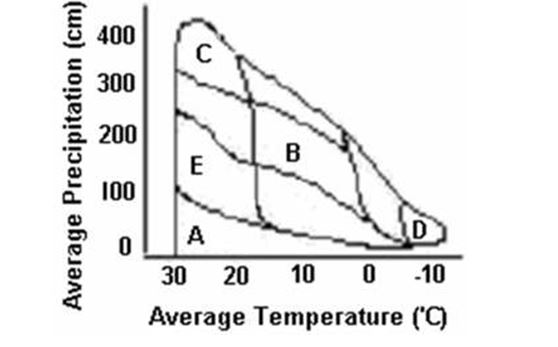A) marine biome.
B) tropical rainforest biome.
C) tundra biome.
D) desert biome.
F) B) and C)
Correct Answer

verified
Correct Answer
verified
Multiple Choice
The main reason for the current high rate of animal extinctions is
A) uncontrolled sport hunting in the developed world.
B) commercial harvesting of wildlife in Africa.
C) drought conditions caused by the greenhouse effect.
D) habitat destruction worldwide.
E) None of these by themselves cause high rates of animal extinctions, but together they combine to cause high rates.
G) All of the above
Correct Answer

verified
Correct Answer
verified
Multiple Choice
The giant panda is considered to be a _________________ species.
A) keystone
B) umbrella
C) flagship
D) indicator
E) principal
G) A) and E)
Correct Answer

verified
Correct Answer
verified
Multiple Choice
Most of the species that are yet undiscovered are probably
A) mammals and reptiles.
B) birds and fish.
C) fungi.
D) invertebrates.
E) multicellular plants.
G) A) and D)
Correct Answer

verified
Correct Answer
verified
Multiple Choice
The main reason that there are relatively few invertebrates categorized as endangered species is because
A) we consider other groups, such as mammals, to be more interesting and desirable.
B) worldwide there are relatively few invertebrates when compared to plants.
C) it is extremely difficult to identify and count invertebrates.
D) Since there are 532 invertebrates considered endangered, none of these are true.
E) invertebrates are more numerous and the relative percentages are similar.
G) A) and B)
Correct Answer

verified
Correct Answer
verified
Multiple Choice
In general, funding for recovery programs is given to species that are
A) in the most danger.
B) the most important.
C) most well known.
D) most numerous.
E) keystone species.
G) C) and D)
Correct Answer

verified
Correct Answer
verified
Multiple Choice
The area marked "A" has a
A) wide precipitation range and narrow temperature range.
B) narrow precipitation and temperature range.
C) wide precipitation and temperature range.
D) wide temperature range and narrow precipitation range.
E) varying temperature and narrow precipitation range.
G) B) and D)
Correct Answer

verified
Correct Answer
verified
True/False
Kudzu vine is a Japanese plant that was introduced without negative consequences into the United States to control erosion.
B) False
Correct Answer

verified
Correct Answer
verified
Multiple Choice
Use the following graph to answer the question.
 -Desert biomes would fall in the area marked by the letter
-Desert biomes would fall in the area marked by the letter
A) A
B) B
C) C
D) D
E) E
G) C) and D)
Correct Answer

verified
Correct Answer
verified
Multiple Choice
Which of the following is not a benefit of high biodiversity?
A) aesthetic and cultural value
B) potential medicinal value
C) potential sources of food
D) ecological value
E) All of these are benefits of biodiversity.
G) A) and E)
Correct Answer

verified
Correct Answer
verified
Multiple Choice
Ecological diversity is a measure of the number of
A) different kinds of organisms within a community or ecosystem.
B) different versions of the same gene in an ecological community.
C) sizes, colors, and shapes of organisms within an ecological community.
D) niches, trophic levels, and ecological processes of a biological community.
E) different species in an ecosystem.
G) C) and D)
Correct Answer

verified
Correct Answer
verified
Multiple Choice
Habitat fragmentation usually leads to a(n)
A) decrease in biodiversity.
B) reduction in the number of introduced species.
C) increase in biodiversity due to the isolated populations.
D) increase in the number of introduced species.
E) more stable environment.
G) A) and B)
Correct Answer

verified
Correct Answer
verified
Showing 21 - 32 of 32
Related Exams